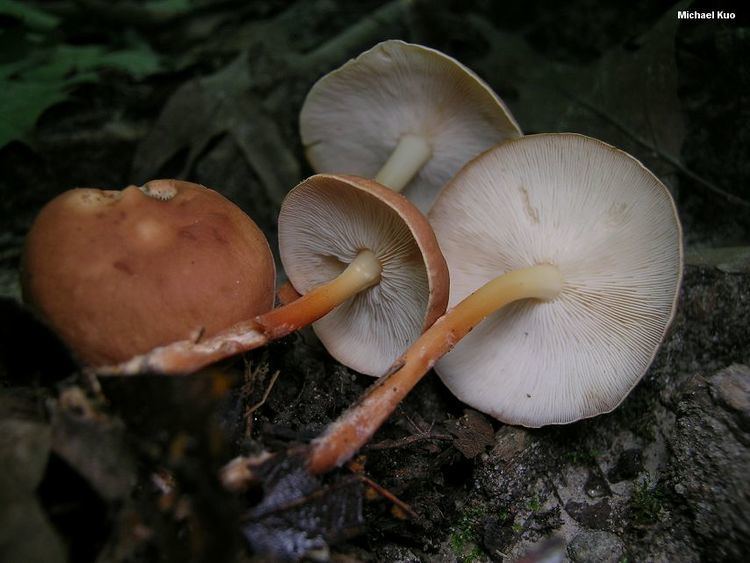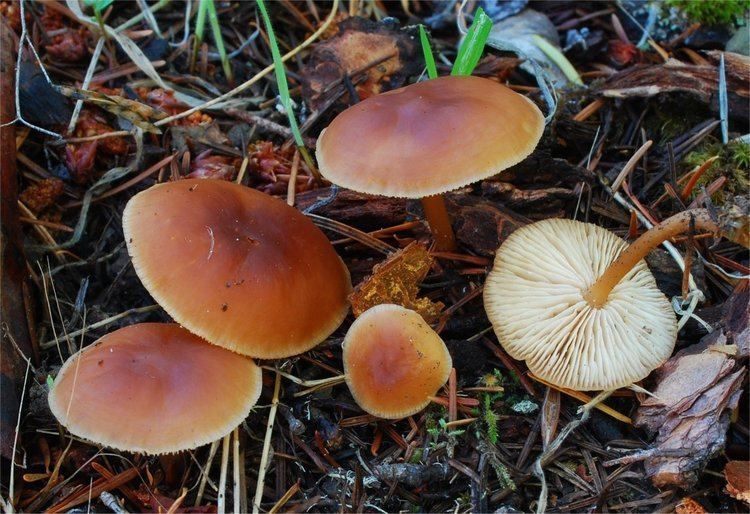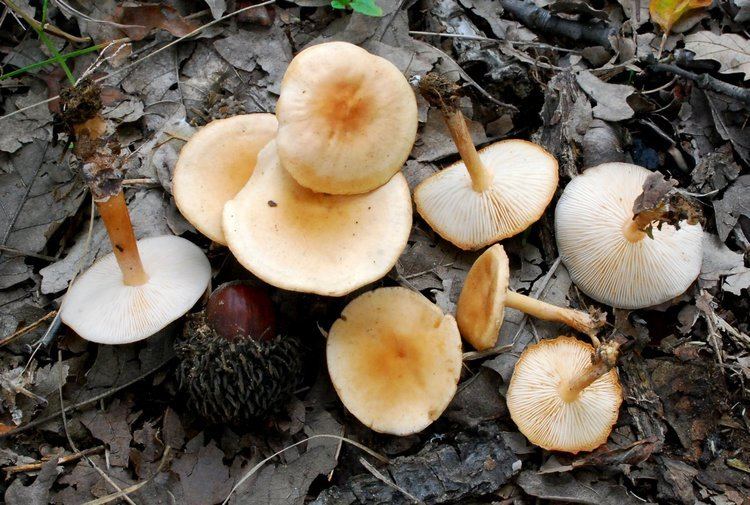Kingdom Fungi Subclass Agaricomycetidae Family Marasmiaceae Rank Species | Phylum Basidiomycota Order Agaricales Genus Gymnopus Higher classification Gymnopus | |
 | ||
Similar Spindleshank, Clitocybe odora, Gymnopus confluens, Marasmius oreades, Russula nigricans | ||
Gymnopus dryophilus fungi kingdom
Gymnopus dryophilus is a mushroom commonly found in temperate woodlands of Europe and North America. It is generally saprophytic, but occasionally also attacks living wood. It belongs to section Levipedes of the genus, being characterized by a smooth stem having no hairs at the base (in contrast to section Vestipedes). Until recently it was most frequently known as Collybia dryophila.
Contents

Description

The cap is 2–5 centimetres (0.79–1.97 in) in diameter, convex, and russet to ochre. The gills, which are only thinly attached to the stem, are whitish and crowded, and the spore powder is white. The bald stem is up to 8 centimetres (3.1 in) long by 4 mm in diameter.

Microscopically the spores are 6×3 µm in size and slightly tear-shaped, there are lobed club-shapedcystidia (15-50 µm × 2-6 µm), and the hyphae on the cap cuticle can also have lobes. It is contended that G. dryophilus in fact consists of a complex of different species and that several new species (including G. brunneolus, G. earleae and G. subsulphureus) should be split off from it. However these species are not generally recognized at present.
Distribution and habitat

This fungus is very common in northern hemisphere temperate woodlands (so much so that it is sometimes considered a "weed" mushroom). It fruits from April to December and is often seen when there are few other fungi in evidence. Although the Greek epithet dryophilus means "lover of oak trees", it is also found with other broad-leaved trees and with conifers.
Edibility

Gymnopus dryophilus is generally considered to be edible, though not worthwhile. It is recommended not to eat the stem, which is tough.
It has been found to contain anti-inflammatory beta-glucans
